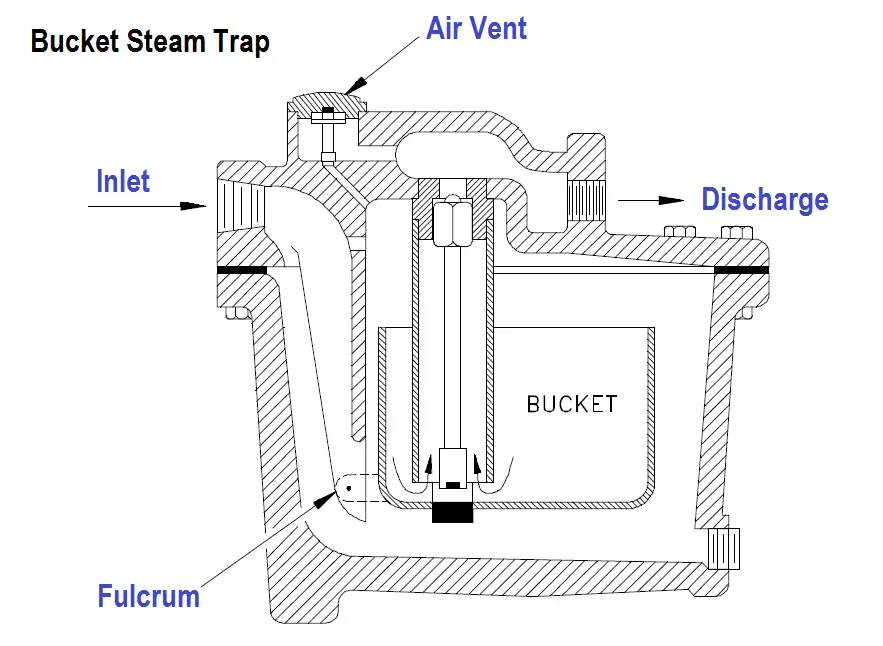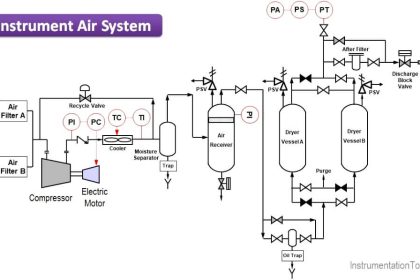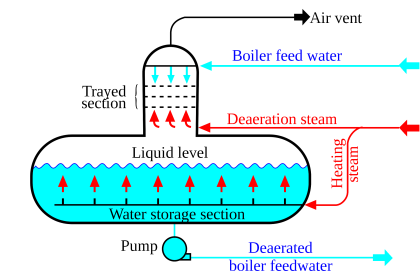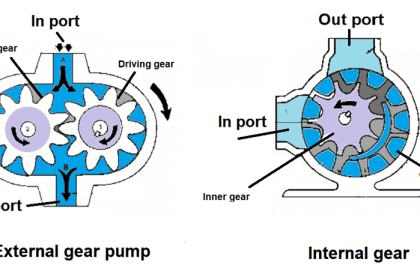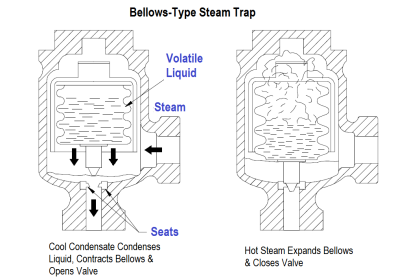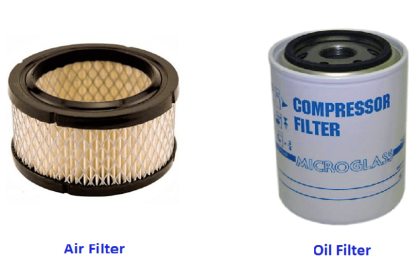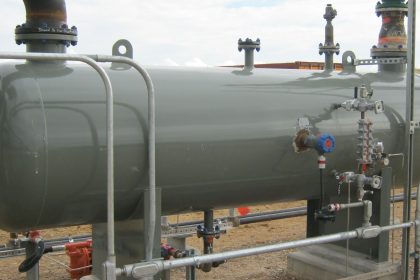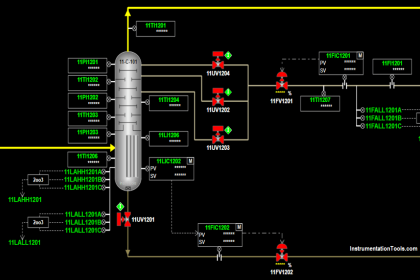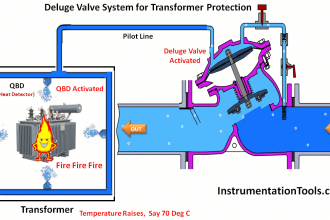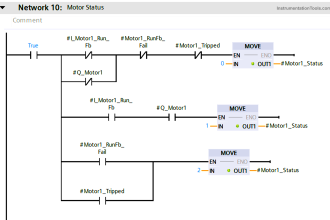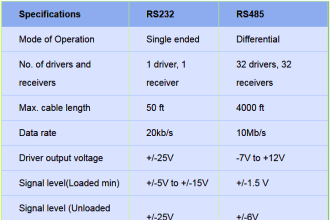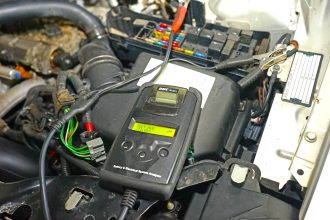In general, a steam trap consists of a valve and a device or arrangement that causes the valve to open and close as necessary to drain the condensate from piping without allowing the escape of steam. Steam traps are installed at low points in the system or machinery to be drained.
Bucket Steam Trap
A bucket steam trap is illustrated in Figure. As condensate enters the trap body, the bucket floats. The valve is connected to the bucket in such a way that the valve closes as the bucket rises. As condensate continues to flow into the trap body, the valve remains closed until the bucket is full. When the bucket is full, it sinks and thus opens the valve. The valve remains open until enough condensate has passed out to allow the bucket to float, and closing the valve.
Figure : Bucket Steam Trap
